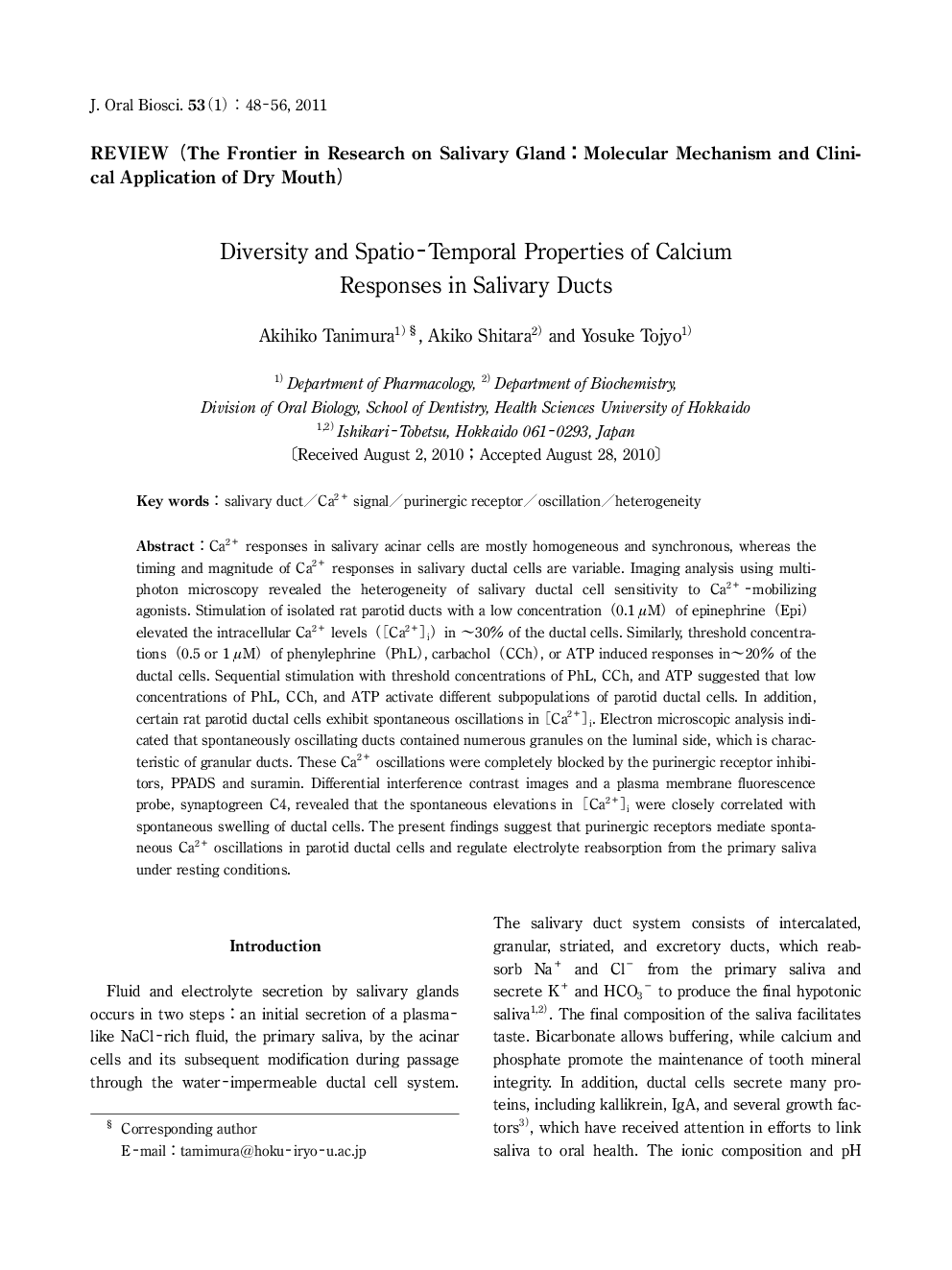| کد مقاله | کد نشریه | سال انتشار | مقاله انگلیسی | نسخه تمام متن |
|---|---|---|---|---|
| 2776931 | 1152652 | 2011 | 9 صفحه PDF | دانلود رایگان |

Ca2+ responses in salivary acinar cells are mostly homogeneous and synchronous, whereas the timing and magnitude of Ca2+ responses in salivary ductal cells are variable. Imaging analysis using multiphoton microscopy revealed the heterogeneity of salivary ductal cell sensitivity to Ca2+-mobilizing agonists. Stimulation of isolated rat parotid ducts with a low concentration (0.1 μM) of epinephrine (Epi) elevated the intracellular Ca2+ levels ( [Ca2+] i) in ∼30% of the ductal cells. Similarly, threshold concentrations (0.5 or 1 μM) of phenylephrine (PhL), carbachol (CCh), or ATP induced responses in∼20% of the ductal cells. Sequential stimulation with threshold concentrations of PhL, CCh, and ATP suggested that low concentrations of PhL, CCh, and ATP activate different subpopulations of parotid ductal cells. In addition, certain rat parotid ductal cells exhibit spontaneous oscillations in [Ca2+] i. Electron microscopic analysis indicated that spontaneously oscillating ducts contained numerous granules on the luminal side, which is characteristic of granular ducts. These Ca2+ oscillations were completely blocked by the purinergic receptor inhibitors, PPADS and suramin. Differential interference contrast images and a plasma membrane fluorescence probe, synaptogreen C4, revealed that the spontaneous elevations in [Ca2+] i were closely correlated with spontaneous swelling of ductal cells. The present findings suggest that purinergic receptors mediate spontaneous Ca2+ oscillations in parotid ductal cells and regulate electrolyte reabsorption from the primary saliva under resting conditions.
Journal: Journal of Oral Biosciences - Volume 53, Issue 1, 2011, Pages 48-56